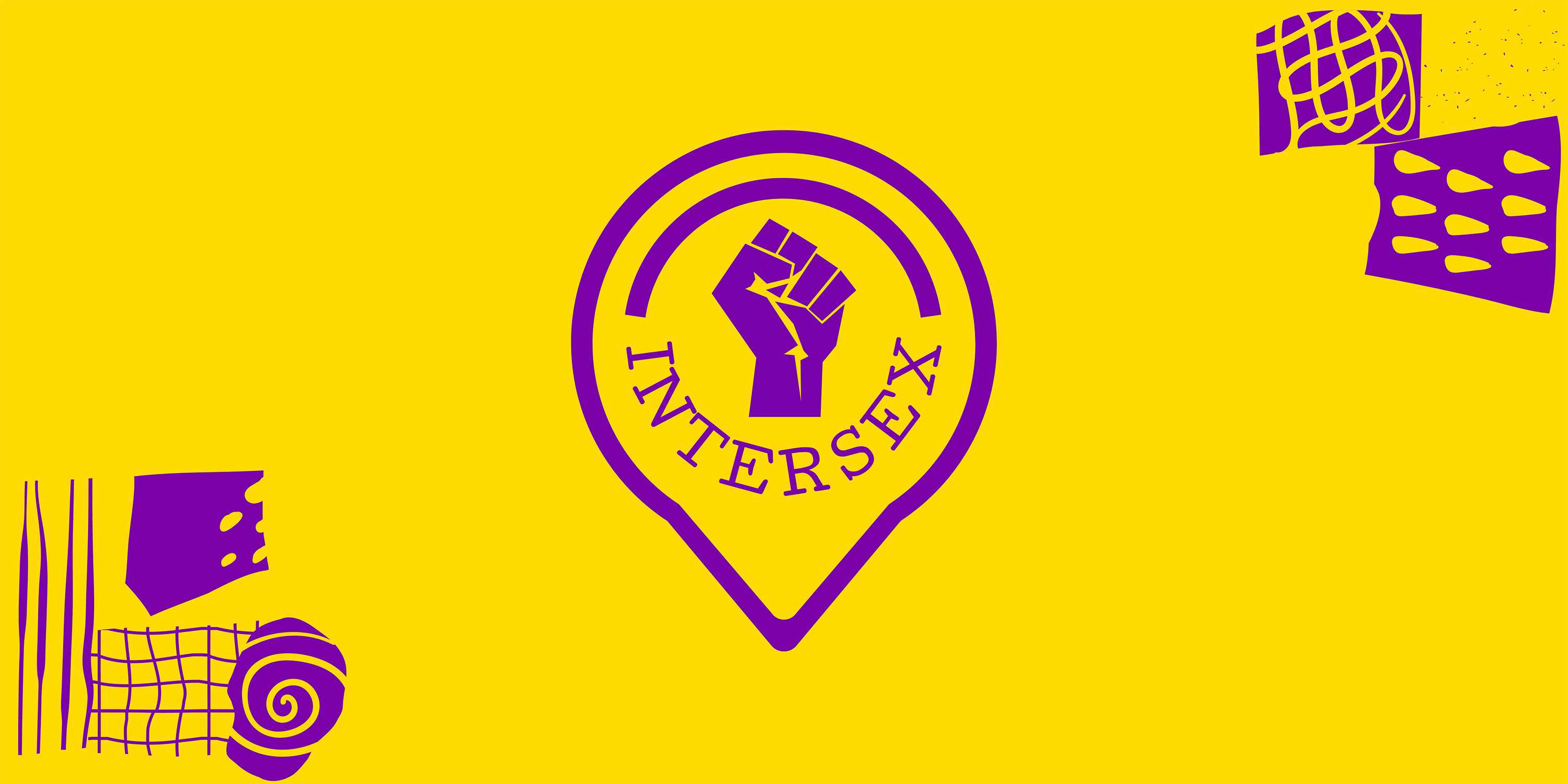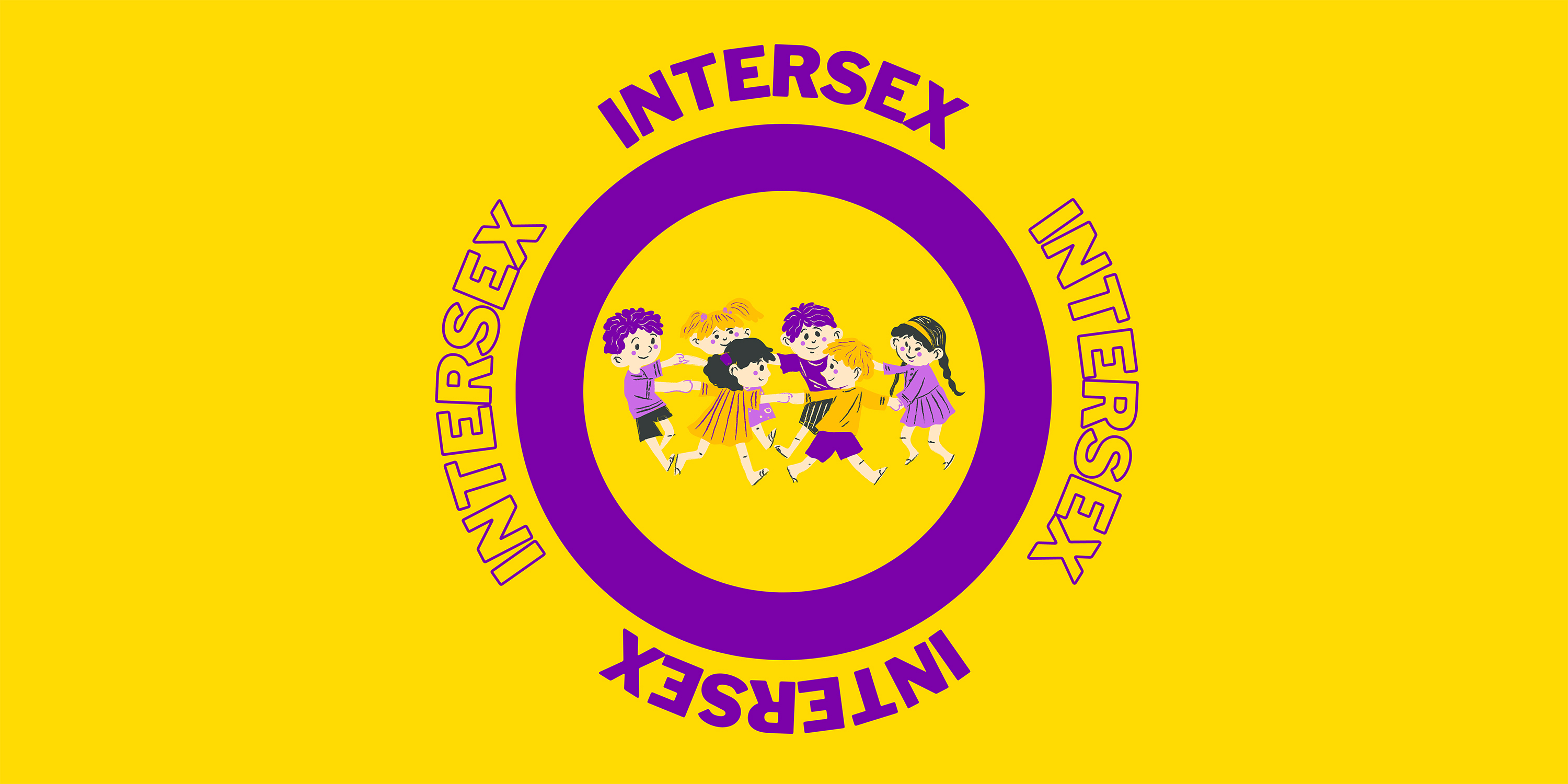This page is dedicated to providing education and resources about Intersex experiences. As our understanding of these experiences is updated, we encourage our community to collaborate with us to add the most updated information and resources to this page.
Please contact the RCSGD at rcsgd@sa.ucsb.edu to provide updates.
Content Warning
As a content warning, this education page will talk about sensitive topics that may make the reader uncomfortable depending on each reader’s lived experience. Intersex surgeries, a lack of consent and bodily autonomy, and human rights violations will be addressed.
Introduction
Intersex is an umbrella term for individuals with bodies that defy the typical understanding of male or female (UC Davis). This classification of bodies only having two options (male or female) for sex follows the sex and gender binary. Intersex traits may be visible at birth, puberty, or in the case of some variations, not at all (InterACT).
The sex binary is based on the assumption that there are two distinct ways for human bodies to develop: that people are born either with a vulva and vagina, uterus, and XX chromosomes, or with a penis, testes, and XY chromosomes (Planned Parenthood). Intersex people are born with or develop characteristics that challenge this assumption.
For example, an intersex individual may be a man, woman, nonbinary, no gender, or multiple genders. Similarly, they may have any sexual orientation, just like anyone who is not intersex. There is no one way to be intersex.
These terms exist to avoid more pejorative terms that stigmatize intersex people and uphold the sex binary (The Trans Language Primer). There are many ways that human sex traits can develop. All of these are natural and normal, and most intersex people have perfectly healthy bodies without surgical intervention (InterACT).
Around 1.7% of people are born with intersex traits, corresponding to about 5.5 million people in the United States (InterACT). 1 in 2,000 infants are at risk of receiving genital normalization surgery (InterACT). Despite being relatively common, intersex issues have received little media attention and intersex people’s experiences are very often silenced.
Intersex Surgeries
Content Warning:
Intersex Surgeries, Lack of Consent and Bodily Autonomy, Descriptions of Procedures, Human Rights Violations
Intersex surgeries are medically unnecessary non-lifesaving procedures performed on intersex individuals to conform their genitals or other sex traits to ideas about what a “male body” or “female body” is supposed to look like (Lindahl, Hans et. al). These procedures are often performed on intersex infants, with most intersex surgeries occurring before the age of 2 (InterACT).
- "reducing" or "repositioning" a clitoris for aesthetic reasons (sometimes called clitoroplasty, or clitoral reduction or recession)
- creating or altering a vagina (vaginoplasty)
- moving a working urethra (hypospadias repair)
- removing the organs (ovaries, testes, or ovotestes) that would make sex hormones (gonadectomy)
The majority of intersex surgeries are unnecessary. Some intersex variations post (life-threatening) issues. For example, intersex gonads may carry a cancer risk (InterACT). This risk level varies. Furthermore, Congenital Adrenal Hyperplasia (CAH) can cause life-threatening issues due to the way the body makes and responds to stress hormones (InterACT). These life-threatening issues must be taken seriously. However, genital surgery does not address these issues (InterACT). They are intended solely to conform an individual to the gender binary.
Many health issues directly stem from unnecessary intersex surgeries. Intersex surgeries come with a high complication risk.
- Absence of natural puberty
- Chronic pain
- Increased risk for urinary tract infections
- Infertility
- Loss of sexual sensation
- Scar tissue
Nine in ten LGBTQ+ intersex individuals reported some level of poor physical health (Medina and Mahowald). In order to correct some of these complications, some intersex individuals take external hormones or undergo multiple surgeries later in life (InterACT). These surgeries can be painful and costly, and the decision to undergo them is a personal decision taken by the individual. However, some physical harm is irreversible and can last for the rest of an individual's life (InterACT).
This may be done by one practitioner, or by multiple (HRW). There is no guarantee that these doctors are knowledgeable about intersex issues. According to the Center for American Progress (CAP), eighty-eight perfect of LGBTQ+ intersex participants had experienced some form of discrimination by a medical professional in the previous year (Medina and Mahowald). They reported doctors using pejorative or stigmatizing language with their patients, enacting physical abuse, or refusing care (Medina and Mahowald). These experiences can be traumatic and lead to PTSD for intersex individuals (HRW). Furthermore, individuals may avoid healthcare as adults (HRW). In fact, three in ten LGBTQ+ intersex individuals reported avoiding doctor's offices to avoid discrimination (Medina and Mahowald). These upsetting treatment and surgeries from medical professionals can cause trauma and PTSD in intersex individuals, and may discourage them from accessing medical care in the future.
Doctors often manipulate parents into thinking that their children need these surgeries. Doctors repeatedly call this surgery "urgent" for their child's physical and mental wellbeing (HRW). They present statistics on surgical risks and outcomes which cannot be substantiated with any evidence (HRW). This leads to many parents consenting to intersex surgeries for their children.
Intersex children are unable to consent to the surgeries performed on them in infancy or in childhood (InterACT). Nor are they informed about these surgeries later in life. Many people do not find out that they are intersex until puberty, adulthood, and beyond (Dutchen). This information about their bodies, the surgeries performed on them, and their intersex diagnosis may be kept secret by medical professionals or their parents (HRW). More recently, there has been more transparency with children on intersex diagnoses and the corresponding treatments (Dutchen).
The United Nations considers nonconsensual surgeries on intersex individuals to be a form of torture (HRW). The American Medical Association and the World Health Organization both classify these surgeries as human rights violations ("US Medical Association"). These organizations, including many others, strongly advocate against intersex surgeries. However, these organizations may also contribute to the stigma against intersex people. Many of these organizations have been criticized for using language like "disorder" to describe intersex variations (Crittenton). They continue to use this language rather than acknowledging that the sex binary itself is an inadequate model of classifying human beings. Thus, human rights activist organizations need to consider the language they use when advocating for intersex individuals.
Rather than undergo intersex surgery, children can be socially raised as a boy or girl (just like any other child) without any surgical intervention (InterACT). Then, when they are old enough, the intersex individual can make an informed, consensual decision regarding what type of medical or surgical intervention, if any, is right for them (InterACT). Waiting and allowing intersex individuals to have autonomy over their bodies is the best way to avoid irreversible harm (InterACT).
Intersex Vs. Trans
Intersex is not the same as transgender. Transgender (trans) refers to a person’s gender identity and their gendered experience (RCSGD). Trans people are assigned a male or female gender based on their physical characteristics at birth, but later come to identify as a different gender (“Understanding Intersex”). Most transgender people are not intersex. Nor can they transition to “become” intersex, because the variations in reproductive anatomy must be present at birth to be considered intersex (“Understanding Intersex).
However, the majority of intersex people are assigned either a male or female sex at birth (Planned Parenthood). Many intersex folks identify with the gender they are raised as. This would mean they are cisgender, since they stay with the gender associated with their sex assigned at birth (RCSGD). Some intersex individuals also identify as transgender. An intersex individual may identify with a gender not associated with their sex assigned at birth, in which case they would be both intersex and transgender (“Understanding Intersex”). For some intersex people, their intersex identity can strongly affect their relationship to their gender identity. Some may identify as intergender, a non-binary gender that reflects this relationship (“Intergender”). Intergender individuals may identify as between the genders of man and woman, or a combination of them (“Intergender”). “Intergender” has been used by individuals who are not intersex, but many in the intersex community believe it should only be used by intersex people (“Intergender”). Intersex individuals can identify with a variety of genders, and each gendered experience is valid.
Intersex and transgender individuals both face structural barriers in the medical communities. While intersex individuals are forced to undergo medically unnecessary surgeries and medical treatment during infancy and beyond, transgender individuals often have to fight for desired and necessary medical treatment in adolescence and beyond (“Understanding Intersex”). This parallel reflects the medical industry’s dedication to upholding the sex and gender binary by policing and regulating people’s bodies. Due to experiences in the medical industry, both transgender and intersex folks experience a lack of bodily autonomy (“Understanding Intersex”). However, it is important to not conflate these two identities. Both transgender and intersex issues are valid, and they require different, distinct needs (ISNA). Those advocating for transgender (or intersex) rights should be conscious of and acknowledge the rights of the other.
Intersex is commonly referenced as the I in LGBTQIA+ or other variations of the acronym. Most intersex organizations include the I in LGBTQIA+, but it is important to note that not all intersex people identify with the LGBTQIA+ community (“Why and How Is Intersex LGBTQ”). However, intersex individuals can identify with any gender or sexual orientation, and may consider themselves a part of the LGBTQIA+ community (“Why and How Is Intersex LGBTQ”). It is important to check with people on an individual basis to make sure you are using language that they are comfortable with. Always use the language someone uses to describe themselves and avoid viewing intersex people as a monolith.
Intersex Justice Movement
Organizations led by intersex activists, such as Intersex Justice Pro (IJP), have been engaged in a long struggle to #EndIntersexSurgery.
In July 2020, the Lurie Children’s Hospital in Chicago publicly apologized for performing genital surgery on intersex infants and ended the practice (Sosin). This was the direct result of a three-year campaign led by the co-founders of IJP, Pidgeon Pagonis and Sean Saifa Wall (Sosin). They led street protests, created a petition with over 40,000 signatures, and shared intimate personal stories about their intersex bodies (Knight). In October 2020, the Boston Children’s Hospital made a similar announcement that they would no longer perform certain procedures on intersex infants (Luthra).
California passed an intersex-affirming resolution in 2018. Authored by Interact, Equality California, and Senator Scott Weiner, the non-binding resolution calls on the medical progression to delay non-consensual procedures that would affect future sexual function until an individual can participate in the decision (“SCR-110:). Find out more about SCR-110.
While this marks a major turning point in intersex justice, these are only two of the thousands of hospitals and one of fifty states across the country. Currently, there are no state or federal laws in the United States that prohibit these procedures (Beam). As of 2021, the bills in the California State Senate that would ban medically unnecessary surgeries on intersex youth have been withdrawn (Beam). This is due to a lack of votes and lobbying against the bills by medical institutions (Beam). Despite a lack of traction with banning intersex surgeries in hospitals, organizations such as IJP work tirelessly to advocate for intersex children.
Supporting Intersex People
- Recognize the differences between challenges faced by lesbian, gay, bisexual, and transgender people and intersex people.
- Acknowledge that each intersex person has a different experience. Intersex folks are not a monolith. Do not make assumptions about a person’s identity or experience. Instead, let them tell you. Always use the language someone uses for themselves.
- If your organization serves LGBTQIA+ communities, make sure that you have included intersex people in your resources before including the “I” in the acronym.
- Honor intersex friends who trust you with personal or medical information. Let people share what they need to, and never ask personal questions. Be compassionate, and do not share personal information with others that you do not have permission to share. Always ask what is okay to mention to others, and what is not, and honor that person’s decision.
- Do not expect to be educated by intersex people. Since many people are uninformed about intersex issues, there is a burden placed on intersex people to explain and justify their existence. Instead, take your education into your own hands, and educate others in your life about intersex justice.
- Be a visible ally by having visible intersex flags, pins, or stickers in your workspace, Zoom backgrounds, or other spaces. This lets intersex people know that they are seen and valued, and indicates that you are a person that intersex people can look to for support.
- Reflect on the language you use to describe bodies, and how you might be reinforcing the sex and gender binary. Use specific language to describe what you mean, such as “vulva and vagina” instead of “female genitals” or “XY chromosomes” instead of “male chromosomes.” When referring to specific individuals, only use the terms that that person has indicated they are comfortable with.
- Organize a protest, fundraiser or other action in your community. Find out if your local hospital performs intersex surgeries. Read How To: Organize a #EndIntersexSurgery Protest Toolkit, and take the lead from intersex advocates.
- Support intersex media. Look for films, books, movies, websites, articles and social media by intersex folks.
- Some notable intersex Youtubers are Pidgeon, Hans, Emily Quinn, and Babalwa Mtshawu.
Campus Resources
The following list contains resources available to intersex students on-campus and in the community. The RCSGD acknowledges that there are no resources meant specifically for intersex students. These departments and resources serve minority students on campus but may not have specific experience or knowledge in serving intersex students.
For any additional questions,
https://caps.sa.ucsb.edu/
Office location: Counseling & Career Services building
This office offers professional and confidential services to help with the prevention and intervention of assault, relationship violence, stalking, and harassment.
They also offer a confidential advocacy line that is available 24/7.
Location: 2nd floor of the SRB (Student Resource Building) around the corner of the 2nd-floor conference room (The Fishbowl).
Phone: (805)-893-4613
Hours: Available through appointment or walk-in
The Jack Canfield Student Medical Emergency Relief Fund (SMERF) provides grants to students with expenses related to medical, dental, psychological, and optical emergencies.
For the purpose of this fund, a medical emergency is a condition, injury, or illness that poses a risk to a person’s life, long-term health, or well-being and requires timely intervention.
Location: Recreation Center Room 1110
Phone: (805) 893-3253
Hours: M-F 8 AM - 5 PM
This office supports students with challenges concerning identity, a study or workspace, and massage chairs.
They also offer a conference room that can be reserved.
Location:1st floor of the SRB (Student Resource Building)
Phone: (805)-893-3778
Hours: M-F 9 am-8 pm
This office offers academic/financial counseling, peer mentoring, and emergency grants.
EOP offers its services to all students but specializes in students that are low-income and/or the first generation.
Location: 2nd floor of the SRB(Student Resource Building)
Phone/Email: (805)-893-4758, eop@sa.ucsb.edu
Hours: M-F 9am-12pm and 1pm-4pm
This center offers various events including lectures, films and videos, panel discussions, readings, art exhibitions, and music, dance and dramatic performances, collaborations, and space in an effort to create cultural awareness.
Location: UCEN, Room 1504
Phone: (805)-893-8411
Hours: M-Th 8a-10pm. F 8am-5pm
This office offers help for any students struggling with basic needs including technology, food insecurity, and/or financial assistance.
Location: UCEN
Phone: (805)-893-2786
Hours: M 11:30am-5:30pm, Tu-Th 9am-6pm, F 10am-4pm
This office offers help to students to combat food insecurity, and advocates that can help students enroll in the SNAP (Supplemental Nutrition Assistance Program).
Location: El Centro, may be available at other locations
Hours: M 12:30pm-4pm, Tu-F 10am-4pm
This office offers food and other necessities to students in need, and also offers meal swipes to eat at the dining commons.
Location: 2nd floor of the UCEN
Hours: Hours may vary
National Resources
IJP seeks to end medically invasive and unnecessary surgery in the US that targets intersex children and adolescents in the U.S. IJP seeks to end medically invasive and unnecessary surgery that targets intersex children and adolescents in the U.S. They center Black and Brown liberation and work alongside intersex activists in the Global South. Their co-founders are Sean Saifa Wall (he/him), Lynnell Stephani Long (she/her), and Pidgeon Pagonis (they/them).
InterACT is an intersex-led organization that does important legal work to end human rights violations of intersex youth and adults. On their website, they feature intersex writers and media, and have a large compilation of resources for intersex youth, adults, and allies.
IC4E seeks to promote human rights and equality for all intersex people through art, education, and action. Their website highlights art made by intersex people about their experiences and provides resources for intersex justice activism.
4intersex.org is a campaign led by InterACT to raise awareness about intersex justice. It includes resources to educate yourself, your community, your doctors, and your lawmakers on a local level to bring the movement to national attention.
InterConnect is committed to building a community for all intersex people, their families, and allies. A space where you are heard, valued and embraced regardless of race, gender, sexuality, ethnicity, socio-economic background, ability, experience, or perspective. A community where you can bring your whole self.
We’re in this together, join us.
Accord Alliance compiles information on intersex folks for families and medical teams. They created a resource for intersex care and partnered with emerging interdisciplinary healthcare teams.
Videos
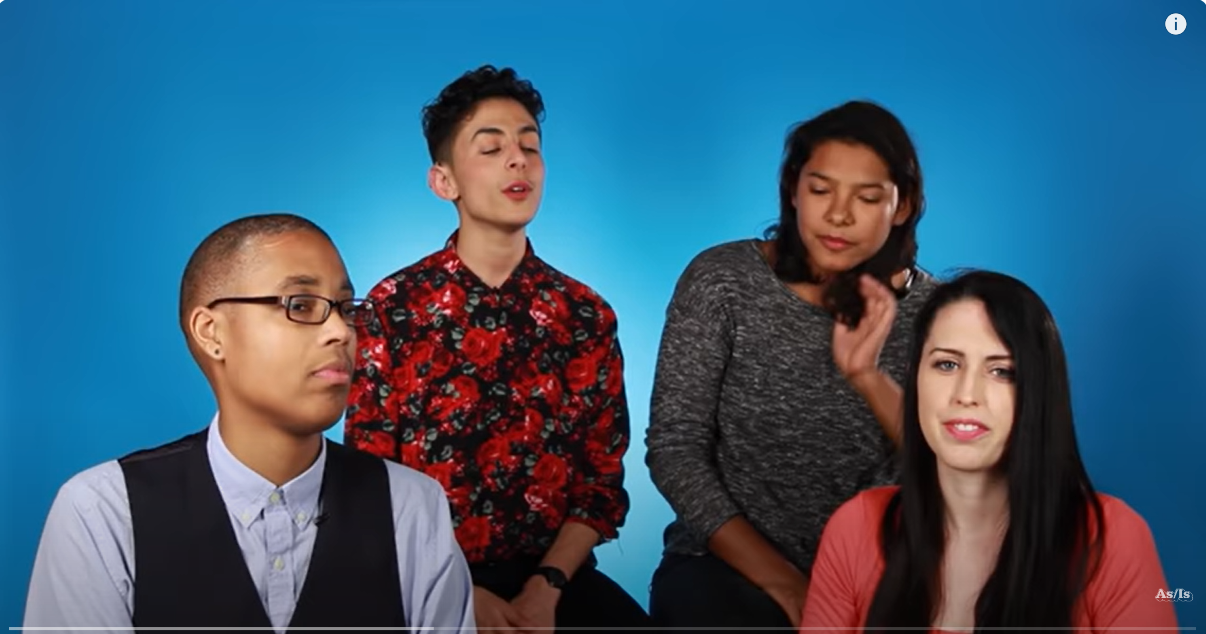
Infographic
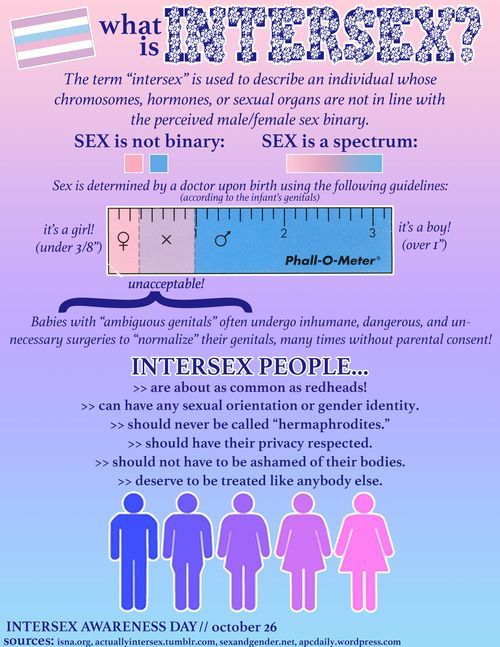
For more infographics, check out @intersexjusticeproject on Instagram!
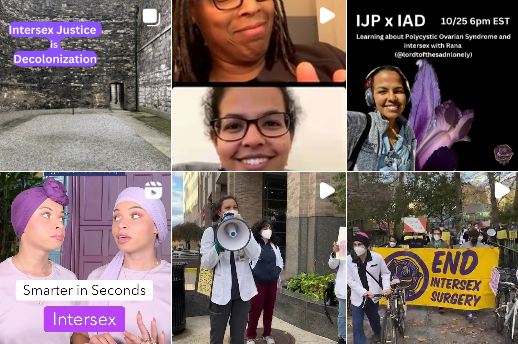
References
- Beam, Adam. “California Lawmaker Ends Bill to Limit Intersex Surgeries.” U.S. News and World, Associated Press, 4 Jan. 2022,
- “California Lawmaker Ends Bill to Limit Intersex Surgeries.” Associated Press, 4 Jan. 2022,
- Crittenton, Anya. “World Health Organization Condemned for Classifying Intersex as 'Disorder'.” Gay Star News, 24 May 2019,
- Dutchen, Stephanie. “The Body, the Self.” The Body, The Self | Harvard Medicine Magazine,
- “Endosex / Dyadic / Perisex.” The Trans Language Primer, 12 Apr. 2022,
- “FAQ: Interact: Advocates for Intersex Youth.” InterACT, 21 Feb. 2018,
- “Intergender.” LGBTQIA+ Wiki,
- “‘I Want to Be like Nature Made Me.’” Human Rights Watch (HRW), 15 Dec. 2020,
- “LGBTQIA+ Glossary.” RCSGD,
- Knight, Kyle. “First US Hospital Pledges to End Intersex Surgeries.” Human Rights Watch, 28 Oct. 2020,
- Lindahl, Hans, et al. “26 Ways Allies Can Support Intersex Awareness Day 10/26.” InterACT, 21 Oct. 2019,
- Luthra, Shefali. “Boston Children's Hospital Will No Longer Perform Two Types of Intersex Surgery on Children.” The 19th, 24 Oct. 2020,
- Medina, Caroline, and Lindsay Mahowald. “Key Issues Facing People with Intersex Traits.” Center for American Progress, 5 Nov. 2021,
- “SCR-110: Interact: Advocates for Intersex Youth.” InterACT, 9 Oct. 2018,
- “Sex and Gender Identity.” Planned Parenthood,
- Sosin, Kate. “After Years of Protest, a Top Hospital Ended Intersex Surgeries. for Activists, It Took a Deep Toll.” The 19th, 11 Aug. 2020,
- UC Davis. “LGBTQIA Resource Center Glossary.” LGBTQIA Resource Center, 24 Mar. 2022,
- “Understanding Intersex and Transgender Communities.” InterAct: Advocates for Youth,
- “US Medical Association Stands against Unnecessary Intersex Surgeries.” Human Rights Watch, 28 Oct. 2020,
- “What's the Difference between Being Transgender or Transsexual and Having an Intersex Condition?” Intersex Society of North America,
- “Why and How Is Intersex LGBTQ.” Oxford University LGBTQ+ Society,
